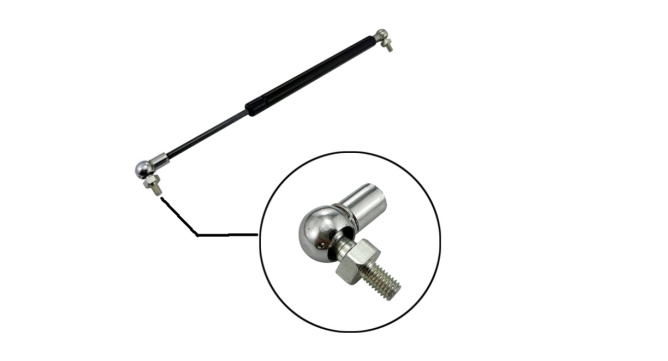Both stainless steel and aluminum gas springs have their advantages and disadvantages, making them suitable for different applications. When comparing stainless steel gas springs to aluminum gas springs, the following factors can be considered to make an informed decision.
Corrosion Resistance
Stainless Steel Gas Springs: These are highly resistant to rust and corrosion, making them ideal for use in humid or corrosive environments such as marine or food industries. Stainless steel 316, in particular, offers superior resistance due to its molybdenum content, which protects against chlorides and acids.
Aluminum Gas Springs: While aluminum is also corrosion-resistant, it does not match the level of protection offered by stainless steel. However, it is often alloyed to improve its properties and is suitable for applications where moderate corrosion resistance suffices.
Weight
Stainless Steel Gas Springs: Generally heavier than aluminum, which can be a disadvantage in applications where weight is a critical factor.
Aluminum Gas Springs: Known for their lightweight nature, aluminum gas springs are more than 50% lighter than their stainless steel counterparts. This makes them particularly advantageous in industries like aerospace, where reducing weight is crucial.
Strength and Durability
Stainless Steel Gas Springs: Offer high strength and durability, maintaining performance under high stress and temperatures. They are designed for demanding environments and have a long lifespan with minimal maintenance requirements.
Aluminum Gas Springs: Although not as strong as stainless steel, aluminum is durable enough for many applications. It is often used in situations where its lighter weight compensates for its lower strength.
Thermal and Electrical Conductivity
Stainless Steel Gas Springs: While stainless steel has lower thermal conductivity compared to aluminum, it offers better heat resistance. This makes it more suitable for applications involving high temperatures, where maintaining structural integrity is essential.
Aluminum Gas Springs: Aluminum exhibits high thermal and electrical conductivity, making it suitable for applications where heat dissipation is crucial. This property is beneficial in industries where managing temperature is a priority, such as electronics or automotive sectors.
Manufacturing and Fabrication
Stainless Steel Gas Springs: Stainless steel is known for its robustness and durability, which can complicate fabrication processes. However, its strength makes it ideal for heavy-duty applications that require reliable performance under stress.
Aluminum Gas Springs: Aluminum's lightweight nature and ease of fabrication allow for complex designs and shapes. This flexibility can lead to innovative applications in industries requiring custom solutions.
Cost
Stainless Steel Gas Springs: Typically more expensive due to their superior properties and manufacturing costs. However, their longevity and reduced maintenance can offset the initial investment over time.
Aluminum Gas Springs: Generally less expensive than stainless steel options. The cost-effectiveness of aluminum makes it suitable for budget-conscious projects where extreme conditions are not a factor.
Applications in Specific Industries
Marine and Food Industries: Stainless steel gas springs are favored for their exceptional corrosion resistance, making them suitable for environments exposed to saltwater or requiring hygiene standards.
Aerospace Industry: Aluminum gas springs are preferred due to their lightweight properties, which contribute to fuel efficiency and payload capacity.
Conclusion
Understanding the environment and demands of your application will guide you in selecting the most appropriate material. If corrosion resistance and strength are top priorities, stainless steel is the better choice. On the other hand, if weight reduction and cost are more critical factors, aluminum may be more suitable. Each material offers unique benefits that cater to different industry demands. Choosing between stainless steel and aluminum gas springs depends on the specific requirements of your application.
